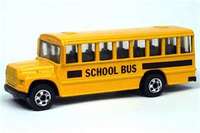School is in Session--Watch for Children
 |
TORONTO--Aug. 28, 2013: With children returning to school drivers need to be more cautious. Child pedestrians are most often hurt in the months of September and October and children aged 10-14 years have the highest incidence of pedestrian-related injuries.1 The roads are busier and drivers need to adjust their driving routine to help predict and prevent these injuries.
Young Drivers of Canada offers some advice to drivers
Be aware of school zone signage. Reduce speed in school zones. A pedestrian struck by a car traveling at 50 km/hr is eight times more likely to be killed than a pedestrian struck at 30 km/hr. 2 Even a small reduction in speed can be significant. Wait for children to complete their crossing before proceeding. The most common child pedestrian action that results in injury or death is at an intersection, followed by running onto the road. 3 Motorists traveling in both directions must stop for the school bus except if the road is divided by a median. Be prepared: school buses stop at all railway crossings, but are not required to use the upper red lights. If you are driving children to school drop them off in a safe area away from traffic - most schools have designated drop off zones. Change lanes early for bicycles. They should be treated as another vehicle so give them ample space. Be vigilant as many kids ride skateboards, scooters or roller blade on the road. Always leave in plenty of time to get to your destination - running late can cause aggressive driving behaviors.
We need to keep in mind that younger children often lack the cognitive and physical skills to make safe judgments about traffic. Children are also physically smaller which makes it harder for drivers to see them and for them to see us. Young Drivers teaches that we should back in rather than out of driveways. The blind area to the rear of vehicle is much larger than the one to the front making it more difficult to see if there is a child behind your vehicle. Young Drivers also teaches a technique called "Ground View". As you approach any vehicle you cannot see through, look for the feet of a pedestrian about to walk in front of you or for the wheels of a bicycle.


